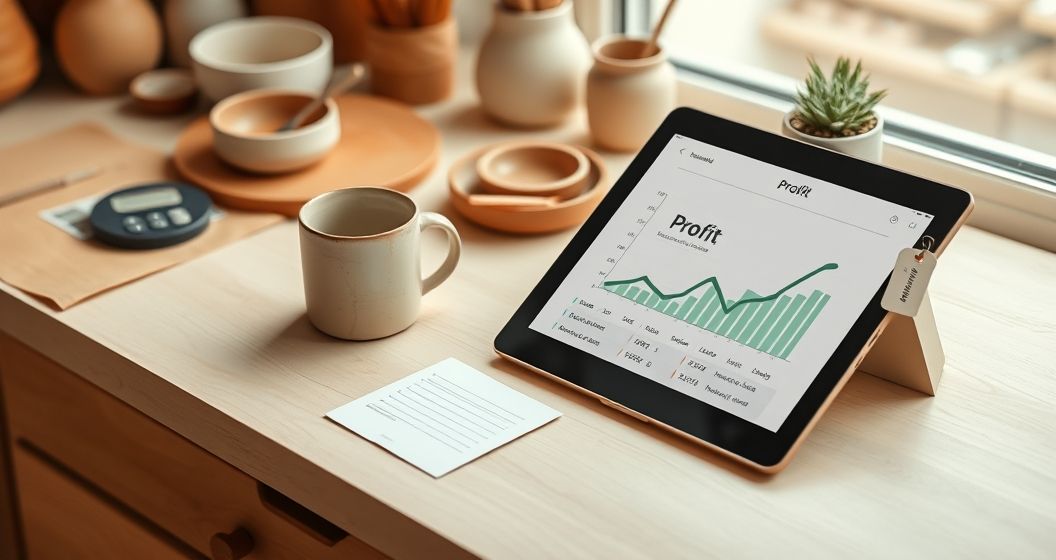Setting the right price for your Etsy products is one of the most critical decisions you will make as a shop owner. It directly impacts your sales volume, brand perception, and ultimately, your profitability. An effective Etsy pricing strategy goes beyond simply covering costs; it involves understanding your market, communicating value, and ensuring your business remains sustainable. This guide provides a structured approach to help you develop a smart and effective Etsy pricing model that attracts customers while securing your financial success.
Understanding Your Foundational Costs
Before you can set a profitable price, you must have a crystal-clear understanding of every expense associated with creating and selling your product. A common mistake is underestimating or forgetting certain costs, which can quickly erode your profit margin. A successful Etsy pricing strategy begins with a thorough audit of your expenses. Break them down into distinct categories to ensure nothing is overlooked. This foundational step is non-negotiable for building a sustainable craft business on the platform.
Your total costs can be divided into three main areas. First are the material costs, which include everything that physically goes into your final product. Second is your labor, which is the value of the time you spend creating the item. Finally, you have overhead and fees, a broad category that includes Etsy fees (listing, transaction, payment processing), shipping supplies, marketing expenses, and studio utilities. Accurately calculating these figures provides your true cost of goods sold (COGS).
Exploring Core Etsy Pricing Strategies
Once you have a firm grasp of your costs, you can explore different strategies to determine your final list price. There is no single formula that works for every shop, as the ideal approach depends on your product, niche, and brand positioning. The key is to select a strategy that aligns with your business goals. Experimenting with these models will help you find the perfect balance for your Etsy pricing, maximizing both sales and revenue.
1. Cost-Plus Pricing Model
This is the most straightforward method and an excellent starting point for any seller. The formula is simple: Total Costs + Desired Profit Margin = Price. For example, if your total cost to produce a handmade candle is $10 (including materials, labor, and fees), and you want a $15 profit, your price would be $25. This model ensures you cover all expenses and make a predictable profit on every sale, making it a reliable foundation for your Etsy pricing strategy.
While simple and safe, the cost-plus model has a significant limitation: it completely ignores the external market. It does not consider what competitors are charging or what customers are willing to pay. Your calculated price might be far too high or too low compared to similar items on Etsy. Therefore, it is best used as a baseline to ensure profitability before evaluating your price against market realities and perceived value.
2. Market-Based Pricing Model
Market-based pricing involves researching your competitors on Etsy to understand the established price range for products like yours. Search for items with similar quality, materials, and style to see what other successful shops are charging. This approach helps position your products competitively and manage customer expectations. An effective Etsy pricing strategy must be informed by what the market will bear, and this model provides that crucial context.
The goal is not to simply copy other prices or to be the cheapest. Instead, use this research to identify a price corridor. If similar items sell for between $30 and $50, you know where your product should likely fall. You can then decide to price at the lower end to attract budget-conscious buyers, in the middle to match the market, or at the higher end if your product has superior quality, unique features, or stronger branding.
3. Value-Based Pricing Model
Value-based pricing is a more advanced strategy that sets prices based on the perceived value to the customer rather than the cost of the product. This approach works best for highly unique, artistic, or personalized items where the value lies in the craftsmanship, brand story, and customer experience. With this model, your Etsy pricing reflects the unique solution or feeling your product provides, allowing for a much higher profit margin.
To implement this strategy, you must build a strong brand and effectively communicate what makes your product special through high-quality photography, compelling descriptions, and excellent customer service. For instance, a one-of-a-kind, hand-painted piece of art is valued for its uniqueness and the artist’s skill, not just the cost of paint and canvas. Customers are willing to pay a premium for that exclusive value, making this a powerful Etsy pricing strategy for artisans.
Factoring in Etsy Fees and Shipping Costs
A comprehensive Etsy pricing strategy must account for all platform-related expenses. Etsy charges several fees that can add up, including a listing fee for each item, a transaction fee on the total sale price, and a payment processing fee. Furthermore, if you participate in Offsite Ads, an additional fee is taken when a sale is generated from one of those advertisements. These must be built into your cost structure to protect your profit margin.
Shipping is another critical component. You must decide whether to charge for shipping separately or to offer “free” shipping by incorporating the cost into your item price. Many buyers are psychologically drawn to free shipping, which can increase conversion rates. To do this, calculate your average shipping cost and add it to your product’s price. This ensures you remain profitable while leveraging a powerful marketing tool within your Etsy pricing.
Finalizing and Testing Your Product Prices
The final step is to combine these elements to find your pricing sweet spot. Start with your cost-plus price to establish a profitable floor. Then, use market research to see how that price compares to your competitors. Finally, consider the perceived value of your product to see if you can command a higher price. This blended approach creates a resilient and realistic Etsy pricing model that balances internal costs with external market factors.
Remember that pricing is not a one-time decision. It is a dynamic process that should be reviewed periodically. Monitor your sales, keep an eye on your competitors, and listen to customer feedback. Do not be afraid to test different price points to see how it affects your sales and profit. A confident and well-researched Etsy pricing strategy is a powerful tool that will support the long-term growth and health of your creative business.






